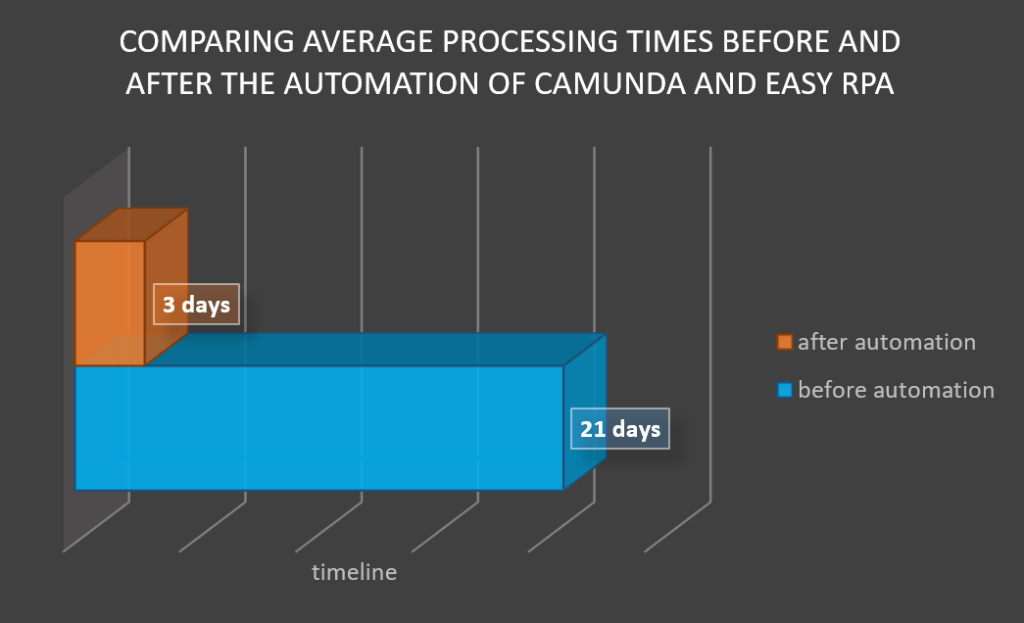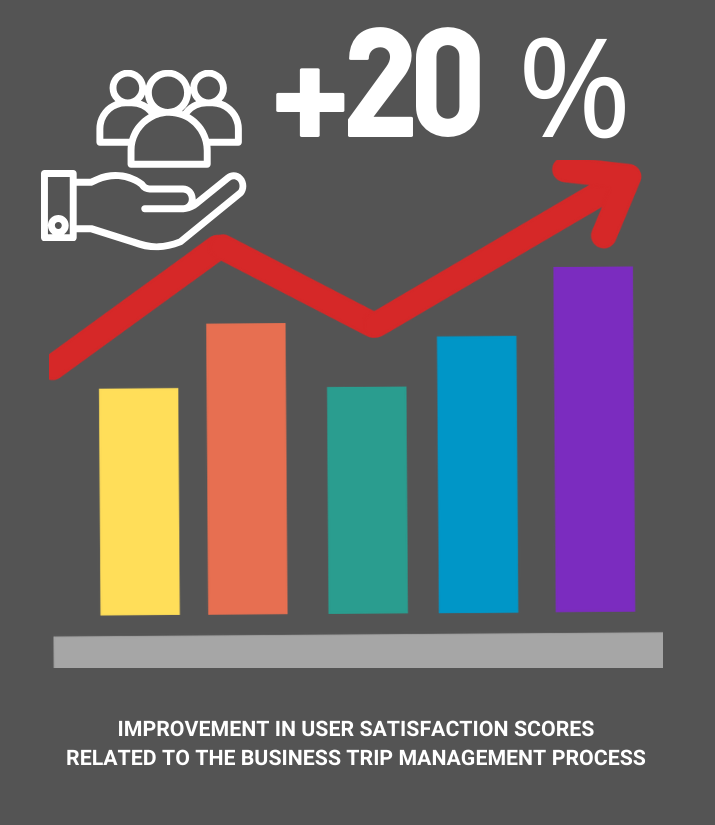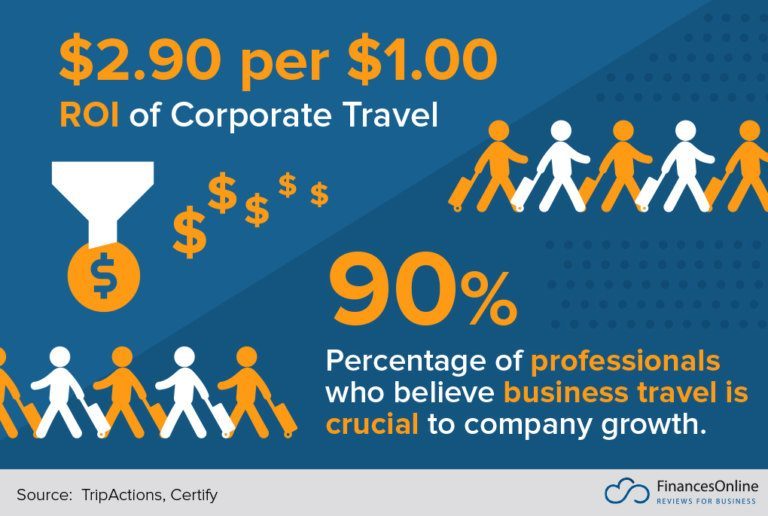Streamlining Business Trip Authorization and Expense Reimbursement Processes: the Path to Efficiency with Camunda and EasyRPA
About 30% of job seekers are ready to accept lower-paid jobs if they include business trips. Companies are aware that employees enjoy these “bleisure” trips and are, in many cases, willing to make them more comfortable by covering travel expenses, including accommodation, meals, and transportation.
Following a gradual recovery in recent years, business travel expenditures in Europe are anticipated to exceed pre-pandemic levels. This is based on the latest findings on business travel spending and trends for 2023-2027. Overall, it seems that business trips and expense reimbursement play a bigger role in the day-to-day operations of companies. But this process requires special attention.
In this article we will look at how the integration of Camunda and EasyRPA platforms, as part of our new Camunda BPM service, can revolutionize these processes, providing maximum efficiency and automation.
Table of Contents
Challenges in Business Trip Processes
In the process of organizing business trips, the stages of formalization are often overseen by one individual. This could be either the employee going on the business trip, an accounting or HR specialist, or, in some cases, a travel manager.
There are lots of factors to be considered when organizing a business trip—even experienced professionals sometimes make these common mistakes:
Outdated Service Prices
In an effort to save on the budget, an employee may choose the cheapest ticket fare and not take into account that, in this case, they may have to pay extra for luggage. And if the business trip is canceled, it is likely that the cheap ticket will not be refunded.
Issues With Service Refunds or Exchanges
Problems with service refunds or exchanges may arise when receiving feedback from the service provider. For example, it may be difficult to reach some airlines by phone, and low-cost carriers often charge customers for phone calls.
Insufficient Sourcing
When planning business travel, it is recommended to explore a multitude of different sources to avoid overpaying, but some may disregard this. 66.5% of companies use online platforms with a mobile solution for planning business travel. There were cases in which an employee independently arranged a business trip and was unaware of alternative options.
Inexperienced Mistakes
Due to a sheer lack of experience, numerous details and risks may be missed when dealing with business trips—for instance, the possibility of flight delays or cancellations.
Complex Document Flow
The process of arranging business trips involves handling a large volume of documents. This is because it’s not just companies needing these documents for accounting purposes. If an employee doesn’t get the required documents from the hotel, they might need to ask the hotel to send them, which could take a while.
Incorrect Reporting Documents
Issues with documents are quite common. One of them is submitting an incomplete set to the accountant, leading to difficulties in reimbursing expenses. For example, if an employee loses a receipt for a service, there is a high risk of not being reimbursed. Such incidents result in a loss of staff loyalty.
Lack of Cost and Trip Frequency Analysis
By analyzing data on business trips, certain patterns can be identified, helping to reduce the budget in the future. For instance, it might be revealed that your employees consistently stay in the same hotel, prompting a direct contract to reduce accommodation expenses.
Lack of Policy Comprehension
Some employees do not fully grasp the company’s policy regarding business trips. 60% of corporate travelers don’t understand the need for a company travel policy. For this reason, travel arrangements and expense reimbursements must be as clear as possible for every participant.
As you can see, the seemingly straightforward process has a number of potential complexities, indicating that the process execution time could also potentially be extended.
Integration of Camunda and EasyRPA
The implementation of Camunda and EasyRPA has greatly enhanced our business trip management and expense reimbursement processes. This has led to increased efficiency and transparency, ultimately boosting overall productivity and optimizing resource utilization within the company.
Camunda, as the leading platform for business process management, provides capabilities for modeling, automating, and business process optimization. It makes it possible to create flexible and transparent workflows, which effectively minimizes the time and effort required for approving and coordinating business trips.
EasyRPA, in turn, provides powerful tools for automating everyday routine tasks, including expense reimbursement processes. This toolkit simplifies application procedures and expense verification, as well as expedites the reimbursement process for employees.
Therefore, the main goal of the IBA Group was to optimize and expedite the process of business trip management and staff cost recovery within a large IT company in Poland.
Business Process Steps
Here’s a breakdown of the stages:
- Business trip application submission — An employee fills out Camunda forms through a web interface integrated with Camunda. The employee data system stores the input as Camunda variables.
- Automated initiation — The Camunda platform automatically initiates the process and forwards the application for review.
- Approval of the application — The manager receives a notification from Camunda that they have a task in Camunda’s task list.
- RPA integration — Using Camunda EasyRPA connector calls a platform EasyRPA. Then, the RPA platform checks the budget, approves the application, and, upon approval, sends a notification to the employee.
- Ticket and hotel booking — Using a lot of Camunda connectors, a system automatically initiates booking processes integrated with airline and hotel services.
- Document preservation — An employee on the company’s website fills out an electronic form and attaches photos/scans of receipts and invoices during the business trip.
- Business trip confirmation — Upon return from the business trip, the employee visits the company’s website to confirm the completion of the business trip. Camunda triggers the first EasyRPA robot.
- Report submission — EasyRPA recognizes the attached hotel receipts and invoices, entering the employee’s expense data into the database. Camunda then generates the business trip report.
- Report review — The second EasyRPA robot supports the report verification process by cross-referencing the data with the original request. If the EasyRPA robot discovers errors in the report, Camunda notifies the accounting department, prompting them to review and confirm the report.
- Expense reimbursement — The third EasyRPA robot generates the necessary documents for the accounting department to expedite the process of transferring funds to the employee’s account. Camunda automatically initiates the expense reimbursement process.
Infographics and Data Statistics
To visually represent the impact of our Camunda BPM Service and EasyRPA on the travel authorization and expense reimbursement process, consider the following infographics:
Efficiency Gains
This is a timeline comparing average processing times before and after the automation of Camunda and EasyRPA.

*Source: Internal company data, post-implementation analysis.
Error Reduction
Here is a visual comparison of error rates in travel and expense processes pre- and post-integration.

*Source: Internal company data, quality control metrics.
User Satisfaction
Here’s a look into an improvement in user satisfaction scores related to the travel management process.

*Source: Employee surveys, feedback post-implementation.
Cost Savings
These are cost savings achieved through the reduction in processing time and error rates.

*Source: Internal financial reports, post-implementation analysis.
*Note: All statistics and data mentioned in the infographics are based on internal company data and analysis conducted post-implementation.
Advantages of Using Camunda and EasyRPA
Let’s explore how tools like Camunda BPM service and EasyRPA enhance business operations:
- Process automation — Camunda BPM service enables the creation of flexible business processes, while EasyRPA automates repetitive tasks.
- Integration — These technologies can integrate with various systems, such as booking systems, financial platforms, and mobile applications.
- Accelerated decision-making — EasyRPA can be used for automatic budget and application data checks, speeding up the approval process.
- Efficiency — Companies experience the reduction of manual intervention, minimization of errors, and increased process efficiency.
- Monitoring — Camunda platform provides tools for process monitoring and identifying bottlenecks.
Expense reimbursement — With accelerated processes, funds can be reimbursed to the employee more quickly.
Conclusion: Reshaping Business Travel Management

As companies continue their digital transformation journey, embracing technologies like Camunda BPM Service and EasyRPA is becoming increasingly pivotal for staying competitive and agile in the global IT arena.
The numbers speak for themselves:
- 90.6% of corporate travel managers and 91.3% of business travelers said that business travel is crucial to company growth. (Skift + TripActions Business Travel Survey, 2019)
- 83% of employees say that business travel is a job perk. (Stratos Jet Charters, Inc., 2020)
The synergy between Camunda BPM Service and EasyRPA is reshaping the operational landscape of companies, particularly in the realm of business travel authorization and expense reimbursement. The combination of efficient BPM processes, smart automation, and user-friendly interfaces improves operational efficiency, as well as enhances employee satisfaction.
Be on the trend of powerful solutions for your business — invest in development!